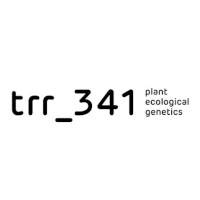The TRR341 is organized into two research areas
Projects of the TRR341 aim to answer two overarching questions (OAQ):
- OAQ1: Which traits, genes and (epi-)genetic variants impact plant survival and reproduction in natural environments?
- OAQ2: Do the same or different genes and pathways contribute to functional traits and trait complexes, and do they sustain plant adaptation to similar ecological environments across populations and species?
To answer these questions, the contribution of genes and genetic variants to complex traits will be evaluated across varying environmental conditions. Observations in field surveys, common garden experiments, and controlled-growth conditions will be compared, in order to identify the ecological relevance of genetic variation. Understanding the ecological traits that mediate the importance of genetic variants in complex natural environment and the genetic architecture of these traits is at the heart of our research effort. We will further test whether variation in comparable traits draws from variation in the same genetic pathways and genes between species. In doing this, we will compare species with similar or different ecological strategies.
To achieve its research goals, our consortium is organized into two key research areas:
Research area A will evaluate the impact of selected traits and trait complexes on plant survival and reproduction in response to limited resources, abiotic stress, and plant-plant competition. Several of these candidate traits have a well-described genetic basis; however, we will also identify novel genes and genetic variants contributing to the variation of these traits. In doing so, we will experimentally test the potential of these genes and traits for plant adaptation to environmental challenges typically posed by global environmental changes.
Research area B will use quantitative and population genetic as well as genomic methods to isolate novel genes and genetic variants in plant genomes that together contribute to past and ongoing plant adaptation in natural populations. Furthermore, we include experts in the theory of adaptation and natural selection to support the detection and interpretation of trait evolution and selection patterns in genomes.
